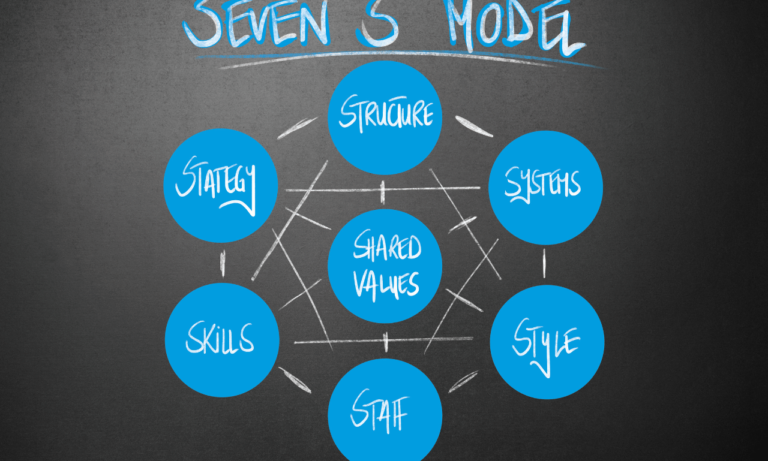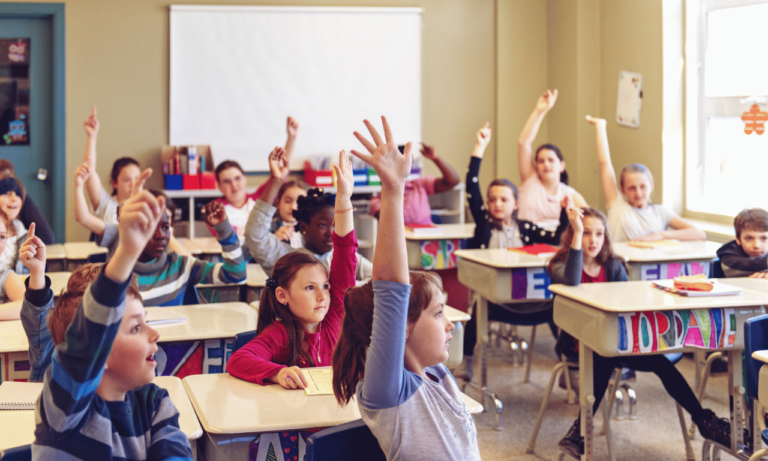Phone:
(+65)8319-0742
The pursuit of academic achievement in today’s educational landscape is continually evolving, as educators seek out innovative teaching methods to better serve their students. A crucial element in this development is Cognitive Support in Classrooms, a multifaceted approach designed to align with the unique cognitive processes of learners. By acknowledging the constraints of working memory and strategizing around cognitive load, we can refine instructional methods to augment student engagement and comprehension. The objective is clear: create a learning environment where support meets cognition, and education becomes not just a task, but a meaningful, impactful journey.
Key Takeaways
- Active engagement with student cognitive capacities elevates learning experiences.
- Innovative teaching methods tailored to cognitive strengths can boost academic achievement.
- Awareness of cognitive load is key to designing effective student engagement strategies.
- Personalized learning is a cornerstone of effective cognitive support in classrooms.
- Practical application of these concepts can lead to measurable improvements in educational outcomes.
Understanding Cognitive Load and Its Impact on Students
In today’s educational landscape, cognitive load plays a crucial role in shaping student success. It’s an integral concept that educators must understand to create an effective learning environment. This load directly interacts with a student’s working memory, which is often likened to a mental workspace where information is temporarily held and manipulated.
Defining Cognitive Load and Working Memory Constraints
The human brain has an astounding ability to process information, yet working memory has its limitations. Typically, it can only hold a handful of information elements simultaneously. Cognitive load refers to the volume of information that working memory must handle at any given time. When the load exceeds the capacity of the working memory, it can interfere with the ability to comprehend new material and impede the transfer of knowledge to long-term memory, undercutting the foundation for long-term student success.
Strategies to Reduce Extraneous Cognitive Load
- Breaking down complex information into smaller, more manageable chunks can prevent overloading a student’s working memory.
- Implementing multimedia tools thoughtfully, ensuring they complement rather than distract from the learning process.
- Creating a quiet, organized, and distraction-free classroom environment to foster better concentration and learning.
Implications of Cognitive Load on Classroom Learning
Understanding and adjusting for cognitive load can be transformative in the pursuit of student success. Educators can adapt their classroom strategies to minimize unnecessary cognitive load, which can dramatically impact the efficiency and effectiveness of student learning. This adjustment can involve clear instructions, minimizing extraneous content, and structuring lessons in a way that aligns with the natural constraints of the working memory. Awareness of these implications can foster a supportive environment that enhances student’s ability to learn, recall, and apply informationâa critical step towards achieving significant progress in academic pursuits.
The Role of Educational Technology in Cognitive Support

In the landscape of modern education, educational technology stands at the forefront of innovative teaching and learning methods. It is an instrumental asset in orchestrating personalized learning experiences that seamlessly adjust to the strengths and weaknesses of individual students. Such technology provides a scaffold for learners to climb towards greater heights of student success.
The integration of interactive multimedia into the curriculum is one way educational technology facilitates engagement and comprehension. Dynamic visuals, interactive simulations, and instantaneous feedback are hallmarks of these advanced learning tools, which cater to a variety of learning preferences and keep students captivated in their educational journey.
At its core, the application of educational technology in cognitive support addresses not just the absorption of information but its retention and application in long-term memory. This tech-savvy approach to learning ensures concepts are not only understood but are remembered and utilized beyond the classroom walls, ultimately paving the way for meaningful academic and career preparation.
- Multimedia presentations that reduce cognitive load and foster engagement
- Adaptive learning platforms that customize instruction based on student performance
- Online assessments providing immediate feedback to guide learners
Furthermore, educational technology supports educators in tracking progress and identifying areas where students may need additional support, highlighting the synergy between technology and personalized learning. This alliance is key in building strategies meant to enhance every student’s ability to succeed, thereby contributing to an overreaching goal of student success within the educational sphere.
Personalized Learning: Tailoring Education to the Student

In today’s educational landscape, the recognition of personalized learning as an effective approach to enhance cognitive development is growing rapidly. By acknowledging and accommodating the diverse cognitive needs of students, educators are able to offer more tailored and impactful learning experiences.
Benefits of Personalized Learning Approaches
The cornerstones of personalized learning rest on its capacity to address the variegated landscape of student abilities and interests. This fine-tuning of education creates a fertile ground for nurturing cognitive development. Here are some significant benefits that personalized learning provides:
- Adaptability to individual learning styles, enabling students to engage with material in the way they learn best.
- Enhanced motivation through tailored challenges and support, which meets learners at their level of competence.
- Increased opportunity for students to take ownership of their learning, fostering self-efficacy and independence.
Implementing Personalized Strategies for Diverse Cognitive Needs
Embracing personalized learning requires a shift in pedagogical strategies to effectively meet diverse cognitive needs. It is essential for educators to:
- Assess each student’s cognitive strengths and weaknesses to tailor instruction accordingly.
- Offer a range of learning activities that allow for student choice, thereby promoting engagement and self-directed learning.
- Utilize technology to provide customizable and self-paced learning paths that adapt to each student’s progress.
By integrating these versatile approaches, personalized learning becomes a dynamic key to unlocking students’ full academic potential.
Cognitive Support in Classrooms through Active Learning Methods
Active learning techniques are revolutionizing classroom dynamics by transitioning away from the traditional passive absorption of information. These methods foster an ecosystem of engagement, where collaborative problem-solving and peer-to-peer teaching are keystones to construct knowledge. Collaboration among students not only cultivates a community of learners but also reinforces their understanding of concepts through mutual reinforcement. This reflective practice is integral to cognitive support as it aligns with the notion that learning is more significant and enduring when it is a shared endeavor.
Implementing classroom strategies that underpin active learning can result in a dramatic uplift in academic achievement. By prompting students to directly apply theory in practical scenarios, educators are able to cement a bridge between abstract concepts and real-world applications. This hands-on approach not only bolsters cognitive development but also lays the groundwork for knowledge to seamlessly transition into long-term memory. Classrooms that pivot towards active engagement create rich, educational experiences that are both memorable and empowering, positioning students more favorably for lifelong success.
The true essence of cognitive support in classrooms lies in the ability to keep students engaged and participating in the education process. Engaging students through active learning techniques ensures that each student is not merely a passive recipient of information, but an active agent in their cognitive development. With classroom strategies aimed at invoking curiosity and critical thinking, educators are equipping students with the skills to navigate an ever-evolving world. Thus, active learning is not just an educational method â it is a catalyst for empowering students to achieve their full potential.
FAQ
What is Cognitive Support in Classrooms and how does it enhance learning?
Cognitive Support in Classrooms refers to the teaching strategies that are designed to accommodate the cognitive processes of students. These strategies enhance learning by recognizing the limitations of working memory, managing cognitive load, and employing advanced teaching methods like active learning and personalized instruction to promote academic achievement and student engagement.
How does cognitive load impact student success in the classroom?
Cognitive load represents the amount of mental effort used in working memory. When cognitive load is too high, it can overwhelm students, making it difficult for them to process new information and apply what they’ve learned. By optimizing cognitive load through effective classroom strategies, educators can foster an environment that enhances learning and student success.
What strategies can be used to reduce extraneous cognitive load?
To reduce extraneous cognitive load, teachers can provide clear and concise instructions, simplify complex information, eliminate unnecessary distractions, and use visual aids and scaffolds to enhance understanding. These strategies help students focus on essential content and process information more effectively.
In what ways can educational technology support cognitive development?
Educational technology offers interactive, multimedia experiences that can tailor to the individual needs of each student. It can manage cognitive load by breaking down complex information into more digestible parts, offer instant feedback to aid understanding, and engage students through personalized learning paths. Together, this supports cognitive development and contributes to student success.
What are the benefits of personalized learning approaches?
Personalized learning approaches provide benefits such as catering to individual learning styles, addressing specific student challenges, and promoting student autonomy. They offer tailored support, allow students to work at their own pace, and provide them with choices in how they learn, all of which contribute to more effective cognitive development and academic achievement.
How do active learning techniques contribute to cognitive support in classrooms?
Active learning techniques engage students directly in the learning process by involving them in collaborative problem-solving, peer teaching, and the hands-on application of theory. These methods help students forge connections between new and existing knowledge, making it easier for them to understand complex concepts and retain information for long-term use, thus supporting their overall cognitive development.

Framework for Skill Development Essentials
Embarking on a journey of professional enhancement calls for a solid foundation, and leveraging an Effective…

Exploring Constructivist Teaching Methods in Classrooms
The academic landscape is perpetually evolving, with Constructivist Teaching Methods steadily gaining…

Creating a Supportive Learning Environment
The quest for cultivating a Supportive Learning Environment goes beyond the mere arrangement of desks…

Exploring Benefits of Pedagogical Scaffolding
In the quest for expanding educational horizons, pedagogical scaffolding benefits encompass more than…

Empowering Student-Centered Learning Support
At the core of educational innovation lies the imperative shift to Student-Centered Learning Support….
No posts found

















